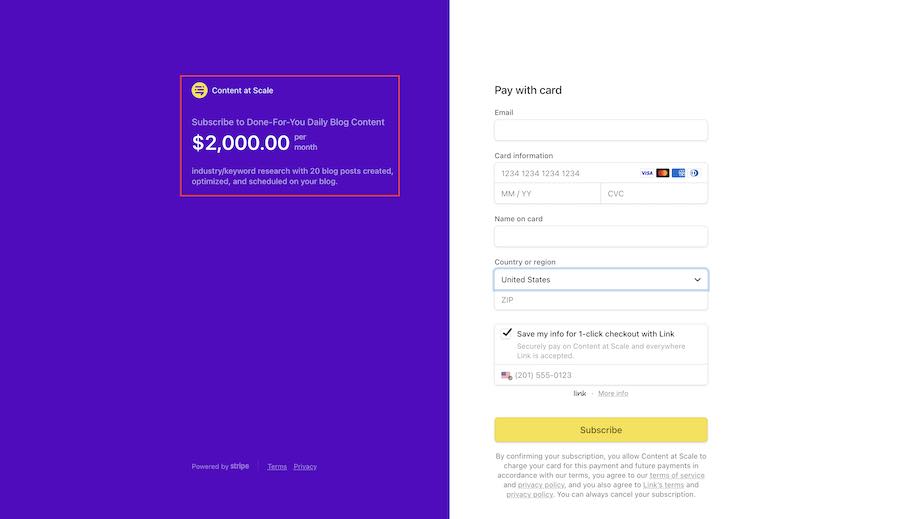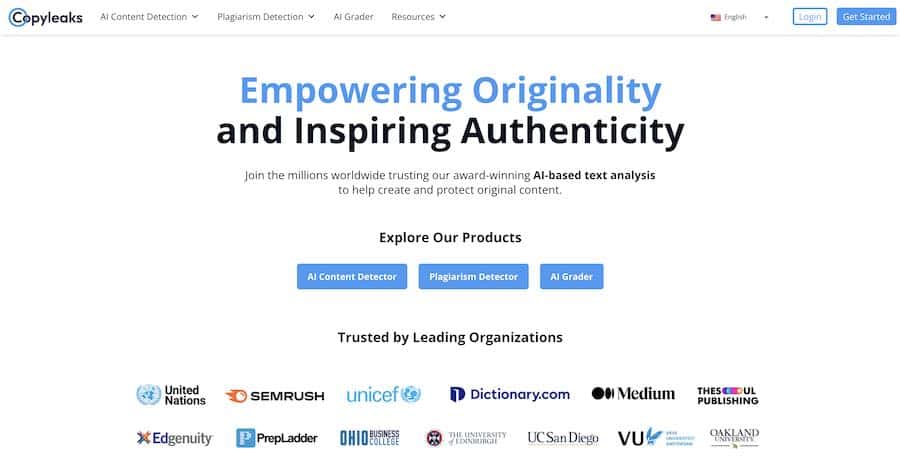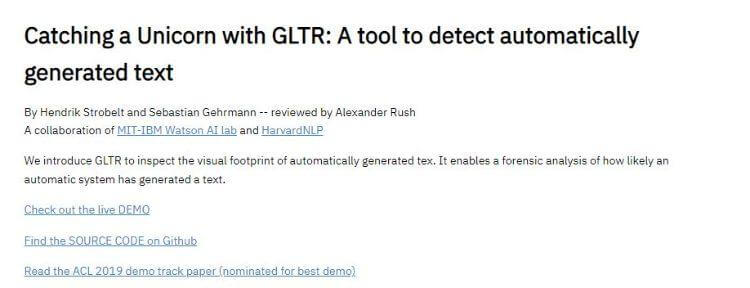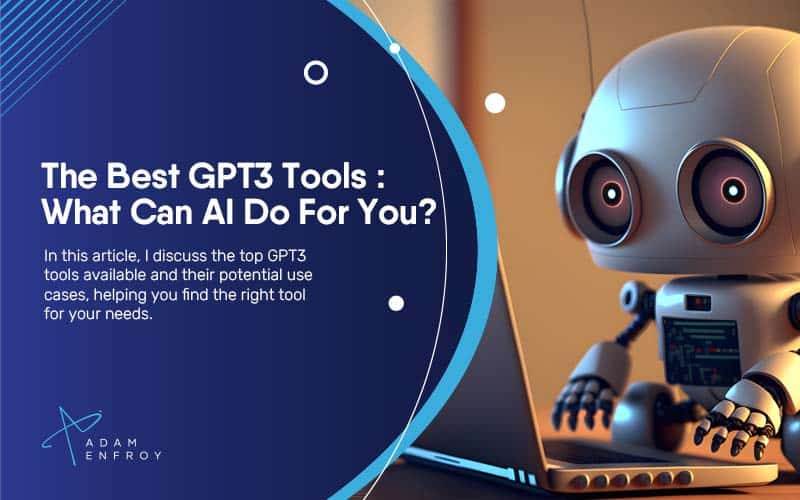5 Best AI Content Detector Options in 2024

As artificial intelligence (AI) continues to become more advanced, it can also help detect content other AI tools have created.
While this might seem like a meta-concept (Inception, anyone?), using AI to detect content created by other AI tools serves a valuable purpose.

As a business owner, you want to be able to trust the output of your AI tools and this is where content detectors come in.
In this article, I’ll look at the best AI content detectors currently available, helping you determine which is right for your needs.
What Is The Best AI Content Detector?
Here are the best AI content detector options to consider.
1. Content At Scale.
Best Overall AI content detection.

Content at Scale offers a free AI content detection tool to run your content through.
Paste in your content, and the AI will analyze it for artificial intelligence-generated based content.
Alternatively, if you’re looking for an effortless way to generate content quickly and accurately, Content at Scale offers an AI writing tool that revolutionizes how businesses create content.
This tool can generate several thousand-word blog posts in minutes.
Plus, you don’t have to worry about costly penalties as this technology produces high-quality articles free of plagiarism and other errors.
With advanced SEO-optimization capabilities, Content At Scale provides an effortless way for companies to gain topical authority fast while saving time and money.
The tool also inserts a table of contents and snippets that make it easy for readers to quickly find the information they need.
Key Features:
- Built for SEO content marketers, the finalized product benefits your search engine rankings.
- A proprietary set of AI engines that use natural language processing (NLP) to generate quality content in minutes
- Tweet box and key takeaways at the end of each post so your readers can quickly comprehend the main points.
- On-page checklist to ensure your content is SEO-friendly and optimized for maximum reach.
- AI Detectors to ensure your content is original and organic so it ranks well.
Pricing:

The AI detection tool is free to use.
Regarding content creation, Content At Scale’s pricing plan is $2000 per month.
You also get an extra 20% credit when signing up through this link.
2. Originality.AI
Best For Web Publishers.

Originality.AI is a content solution for serious web publishers.
This tool features Team Management, Full Site Scanning, Auto-Billing, and more.
It also offers an advanced AI Writing Detection algorithm that identifies plagiarized work.
The platform has powerful tools for managing teams and projects, giving you the power to manage multiple sites at once.
You can add unlimited team members to your plan, so everyone gets their login.
Users can also add any number of websites to scan for just pennies a word, making getting started easy.
Check out my full Originality.AI post for more information.
Key Features:
- Easy-to-use API helps you quickly integrate the tool into your existing environment.
- You can also use the API to track and monitor changes.
- Enter a URL and scan the website for any potential plagiarism or AI writing tools usage suspicion.
- Use the powerful team management features to manage multiple websites quickly and seamlessly.
- Use AI Detection software to ensure your content is original.
Pricing:

Originality.AI costs $0.01 per credit.
One credit scans 100 words so a 10,000-word document would cost $100.
3. Copyleaks AI.
Best For Web Scanning.

Copyleaks AI offers deep web scan capabilities and a comprehensive database to assess any checked content accurately.
Copyleaks uses a text analysis system powered by artificial intelligence algorithms to scan documents, raw text, code, and URLs to detect potential plagiarism.
The platform searches across 60 trillion websites, 15,000+ academic journals, 20+ code data repositories, and 1M+ internal documents to uncover similarities with the scanned content.
Copyleaks also provides an easy way for users to integrate their software into existing systems.
Regardless of your learning management system, their API integrations are easy to set up.
Key Features:
- Copyleaks for Education helps professors and teachers detect plagiarism in student papers or assignments quickly and accurately.
- Copyleaks for Work can help organizations protect their proprietary content from unauthorized use or re-use by competitors.
- Copyleaks for Students & Individuals can provide reliable double-checking of written work.
- Copyleaks uses advanced encryption algorithms to protect all the content scanned on their platform and comply with the highest industry standards for handling confidential data.
Pricing:

Copyleaks offers a 10-page trial plan for free, so you can test the features and see if it’s right for you.
Then, a 1,200-page plan is available for $9.16/month, billed annually, saving users 16% on the monthly counterpart.
4. Writer.com.
Best For SEO Features.

Writer.com takes all the hassle out of content creation and allows you to focus on what matters most – creating great content.
Whether you need an article for your website or an ad for social media, Writer has covered you with its easy-to-use templates.
Writer.com also offers a variety of other features designed to make sure your content stands out.
For example, their automated keyword module helps ensure that your texts include relevant keywords to rank higher in search engine results pages (SERPs).
It also offers an AI detector feature, which gives a human content score to every text you create.
While the AI detection tool is limited to 350 words, you can use it for free.
Key Features:
- The CoWrite feature allows teams to utilize multiple writers and editors who work together on articles, blog posts, or types of content.
- ReWrite provides automated plagiarism detection and writing style corrections.
- Highlights allow text to be highlighted for clarification when it detects artificial intelligence.
- Style guide documentation allows companies to document their custom writing style within the tool.
- Terminology management allows teams to ensure consistency across all their content.
- Writer can read and scan many forms of content of which includes text, videos, PDFs, audio, spreadsheets, and databases.
Pricing:

The Team plan costs $18/month for five members.
Then, the platform offers an Enterprise plan, with pricing depending on the requirements.
5. GLTR.
Best For Scientific Testing.

GLTR (a.k.a. giant language model test room), created by the MIT-IBM Watson AI Lab and Harvard NLP, uses forensic analysis of text to determine if it’s real or fake.
In essence, GLTR utilizes an algorithm based on the likelihood of each word given its context.
The system assigns background colors – green (Top 10 words), yellow (Top 100 Words), red (Top 1000 words), or violet otherwise – so users can quickly detect artificial content.
This process allows the user to check if a text has been built from pre-existing sources or generated with AI techniques.
However, since developers trained GLTR on GPT-2, this is more of a scientific and academic tool than a practical one.
Key Features:
- Authenticate your writing and ensure the originality of your work
- Forensic analysis of text identifies genuine and fake documents
- Real-time background color change to detect fabricated content
- Interactive visualizer presented with all of the words used in the text
Pricing:
GLTR is free to use.
What Is An AI Content Detector?
An AI Content Detector is software powered by artificial intelligence (AI) that can detect plagiarism and artificial content generation.
An AI content detection tool uses natural language processing (NLP) to analyze the text and compare it to existing sources, including published articles, databases, and other websites.
AI detection tools can identify similarities in phrasing and structure, as well as copied words, to give you an accurate assessment of the text.
Once the tool finds a potential duplicate, these tools can provide detailed reports with sources for the AI-written content.
This information helps identify which parts are original and which ones aren’t.
What Is The GPT-3 Language Model?
OpenAI has revolutionized natural language processing with its groundbreaking GPT-3 (Generative Pre-trained Transformer 3) model.
It has been trained on a vast amount of data and can generate human-like text with impressive accuracy.
Many AI content generators use GPT-3 to generate content from scratch, such as articles, blog posts, and emails.
Such text generators leverage the model’s capability for natural language understanding by providing data about a topic or idea and allowing GPT-3 to generate related text.
Features Of A Great AI Content Detector
Here are some features that make for a great AI content detector.
Real-Time Plagiarism Detection
By running a quick scan, a content detection tool should be able to quickly and accurately detect any plagiarism in the text.
Easy-To-Use Interface
No one wants to spend hours sifting through menus or figuring out how a program works when they could be writing instead.
An excellent AI content detector should have an intuitive user interface that makes it easy for users of all experience levels – from beginners to experts – to get up and running quickly.
Ability To Detect Subtle Content Manipulation
Many SEO tools can spin text by replacing words with synonyms or rearranging sentences.
The output usually results in unnatural-sounding sentences that don’t sound like a human would write.
Intelligent AI content detection tools should be able to detect subtle changes made to the text, even if they are not apparent at first glance.
Comprehensive Report Generation With Source References
The ability of an AI content detector to provide comprehensive reports on its findings is essential.
Reports should include citations and references for any copied material discovered and any problems or errors in the original text.
The tools can also use text watermarking to find the source when they detect plagiarism.
This feature is handy when working with large amounts of data or texts from multiple sources.
Use Cases Of An AI Content Detector
Apart from detecting AI content, many tools can also generate unique and original content.
This concept may appear too good to be true.
However, that is the path content generation is taking.
Here are some of the most common use cases for an AI content detector.
Automated Plagiarism Detection
While using a plagiarism checker is not a new concept, it’s now possible to detect even finer AI-generated text outputs.
Even if there are similarities between two documents or pieces of writing, detection is also possible.
The right tools could detect changes even if writers made minor document alterations.
As content marketing becomes increasingly popular, it’s essential to ensure that all content is unique and free from plagiarism using the latest machine learning technology.
Writing Style Correction
While content detection is the primary function of an AI content detector, the tool of choice should also be able to make recommendations for improving the overall writing style and correct any grammatical or syntax errors which may be present in the text.
One should check any AI-generated content to ensure it reads naturally and has the right tone for its intended audience.
Automated Keyword Optimization
Keywords are at the heart of any successful SEO strategy.
The right AI content detector will have features to identify and optimize any keywords used within a text.
As human-written text can often contain irrelevant or outdated keywords (given that SEO is an ever-evolving industry), an AI content detector can help to ensure that any generated text is relevant.
AI-Generated Content Scoring
AI content detection tools should be able to give a score to each piece of AI-generated content based on how closely it resembles natural writing.
Using AI-generated text graded for readability and accuracy can help ensure that all content produced is consistent and meets specific standards.
Terminology Management
Another use of an AI content detector tool is ensuring that the terminology used within a piece of written material follows the standards a company or organization sets.
For example, your favorite shopping sites may have specific language and abbreviations they need to use.
Alternatively, a website that collates news articles from multiple sources may need to have the same writing style across all pieces of content.
Writing Style Configuration And Customization
Human-written text follows specific rules and conventions that make it readable and understandable for readers.
On the other hand, one should be able to configure AI-generated text to match this same level of quality to be taken seriously.
An AI content detector should be not only able to detect potential AI writing but also be able to customize the writing style of any generated content.
This feature can adjust the length and complexity of sentences and the sentence structure used throughout the text.
How ChatGPT Made AI Publically Available
OpenAI released its free chatbot on November 30, 2022, allowing people to quickly integrate AI into their workflows.
This chatbot allows people to create AI-generated content tailored to their needs, allowing them to generate text and save time and resources quickly.
After its release, using ChatGPT became the norm amongst developers, businesses, and marketers.
With many organizations offering open-source platforms using this algorithm, the mainstream use of AI-generated content has become increasingly popular.
Many companies now also offer a Chrome extension for easily integrating GPT-3 chatbots into their websites.
AI-generated content is now so widespread that many use it to create entire website pages, product descriptions, and automated customer service chats.
An AI content detector can combat the risks associated with AI-generated content by ensuring that the text is relevant, up-to-date, and high-quality.
If companies rely on Google and search engine optimization, AI content detectors can ensure that the articles are SEO-friendly and the content generated doesn’t do more harm than good.
The Connection Between ChatGPT and GPT-3.5
GPT-3 content generators can create various outputs from scratch.
These include articles, blog posts, and emails.
Such text generators leverage the model’s capability for natural language understanding by providing data about a topic or idea and allowing GPT-3 to generate related text.
However, this model still offers limitations regarding the content generated.
The data developers used to train the model is now a few years old, which can produce outdated results.
As far as an AI writing platform goes, OpenAI released GPT-3.5 in November 2022, basing ChatGPT on this model.
GPT-3.5 provides faster, more accurate results with less manual editing required.
The time difference between when version 3 (June 11, 2020) and 3.5 were released also gives users access to up-to-date language models that reflect the latest trends in natural language processing.
Wrap Up.
With an AI content detector, businesses can ensure their content follows the standards they set.
Depending on your industry, the ability to detect AI content and customize it might be critical.
As more and more businesses rely on AI-generated content, knowing the pitfalls and benefits of using it is essential, and AI content detectors can help you stay ahead of the curve.
Further reading on AdamEnfroy.com: AI content platform options allow businesses to generate quality content quickly and accurately.
Whether you want to use content creation tools that educate your audience or copywriting tools to sell your products and services, AI content generators are becoming an invaluable part of a digital marketing plan.





